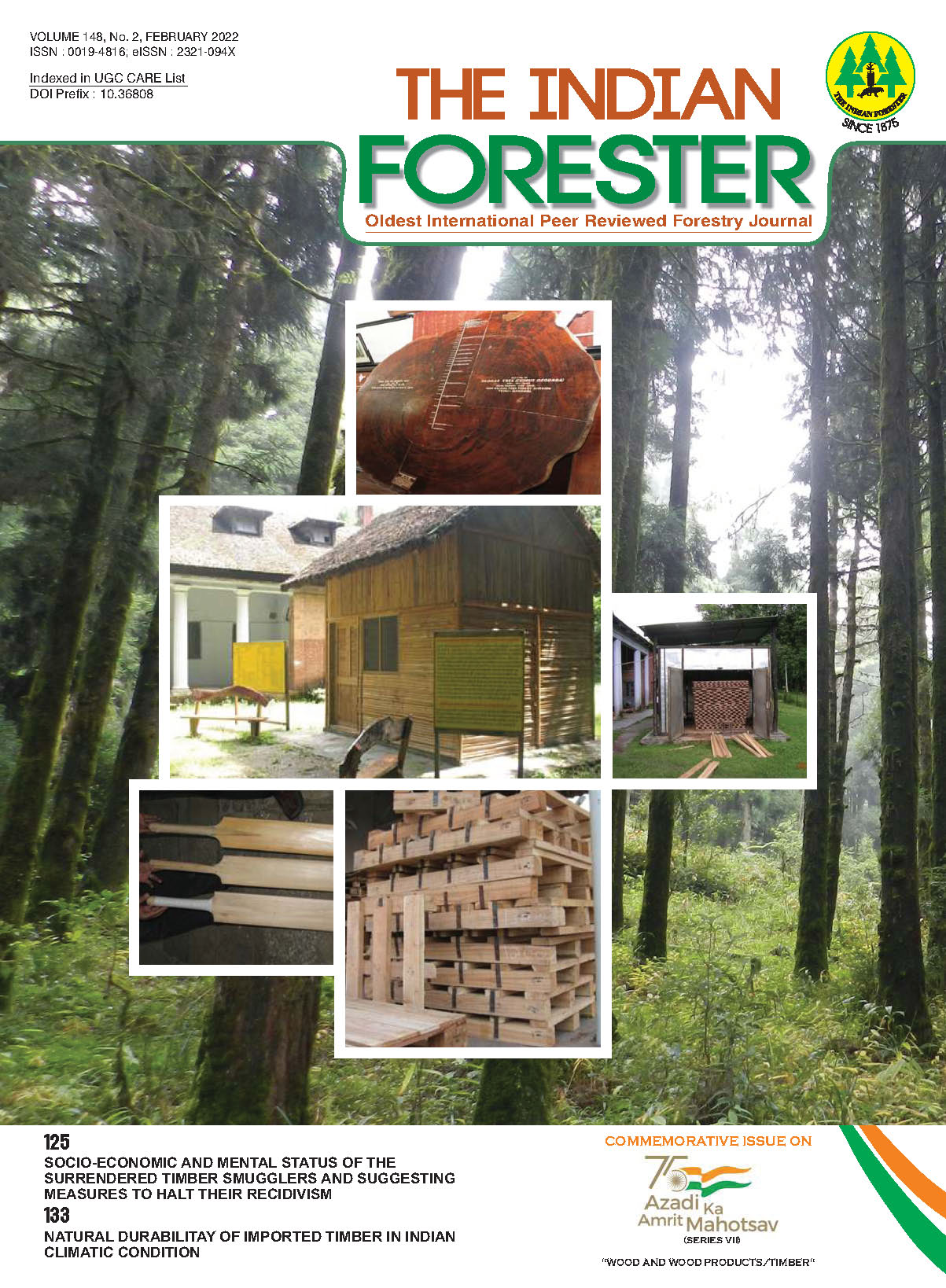Growth Performance and Mapping of Forest Productivity: An Analysis of Indian States
DOI:
https://doi.org/10.36808/if/2022/v148i2/153785Keywords:
Forest Productivity, Convergence, Growth, India.Abstract
Forests are a precious gift of nature to human for their livelihood. The forest transition narrates the reversal of land use trends during the critical period from loss in net area under forest to the net gain in the long run. Despite the importance of forests for human beings, forests have been lagging behind in terms of income and employment generation in India. This paper aims to study the changing contribution and growth performance of forest sector in India. The study is based on secondary data collected from CSO and DES. In case of forest productivity (Gross Value Added per hector), the long-term growth trend was found to be in cyclical pattern. In the recent time starting from decade ending 2011-12 there is increasing trend cycle. It is also found that the growth trend of productivity of the sector was between -2 per cent and 1.8 per cent in the recent phase. It is around no change level in the recent decade. Downward slope of the fitted curve shows the convergence of productivity. But the rate of caching-up is not significant. The forestry model which is based on community can be useful for improving opportunities of livelihood and conservation.References
Barbier E.B. and Tesfaw A. (2015). Explaining forest transitions: The role of governance. Ecological Economics, 119: 252-261.
Barbier E.B., Delacote P. and Wolfersberger J. (2017). The economic analysis of the forest transition: A review. Journal of Forest Economics, 27: 10-17.
Bhattacharya P., Pradhan L. and Yadav G. (2010). Joint forest management in India: Experiences of two decades. Resources, Conservation and Recycling, 54(8): 469-480.
GoI (2019). Economic Survey 2018-19. Economic Division, Ministry of Finance, Government of India, Vol (2). Retrieve: https://www.indiabudget.gov.in/budget2019-20/economicsurvey/index.php
GoI (2019). National Accounts statistics, Ministry of Statistics and Programme Implementation, National Statistical Office, Government of India. Retrieve:http://www.mospi.gov.in/publication/national-accounts-statistics-2019
Mather A.S. (1990). Global forest resources. Belhaven Press.
Mather A.S. (1992). The forest transition. Area, 24: 367-379.
Mather A.S. (2007). Recent Asian forest transitions in relation to forest transition theory. International Forestry Review, 9(1): 491-502.
Miller D.C. and Hajjar R. (2020). Forests as pathways to prosperity: Empirical insights and conceptual advances. World Development, 125: 1-13.
MoEF (2006a). Report of the National Forest Commission. Ministry of Environment & Forests, Government of India, New Delhi, India
MoEF (2006b). National Environment Policy 2006. Ministry of Environment & Forests, Government of India
MoEF (2014). Implementation Guidelines: National Mission for a Green India. Ministry of Environment & Forests, Government of India
Ray S. and Ray I.A. (2011). Impact of population growth on environmental degradation: Case of India. Journal of Economics and Sustainable Development, 2(8): 72–77. Retrieved from :https://iiste.org/Journals/index.php/JEDS/ article/viewFile/627/516
Singh J., Singh A., Singh N., Tomar T.S. and Sachdeva H. (2018). Growth trajectory and inter-regional agricultural disparity: a study of Madhya Pradesh, Indian journal of economics and development, 14(4): 464-472.
Singh J., Dutta T., Rawat A. and Singh N. (2020). Changing role of agriculture in income and employment, and trends of agricultural worker productivity in Indian states. Indian journal of economics and development, 16 (SS): 183-189.
Singh J., Srivastava S.K., Balaji S.J. and Singh N. (2019). Agricultural Growth Trajectory in Madhya Pradesh: Is It Sustainable? International Journal of Social Science and Management Studies, 5(1): 27-35.
Downloads
Downloads
Published
How to Cite
Issue
Section
License
Unless otherwise stated, copyright or similar rights in all materials presented on the site, including graphical images, are owned by Indian Forester.





